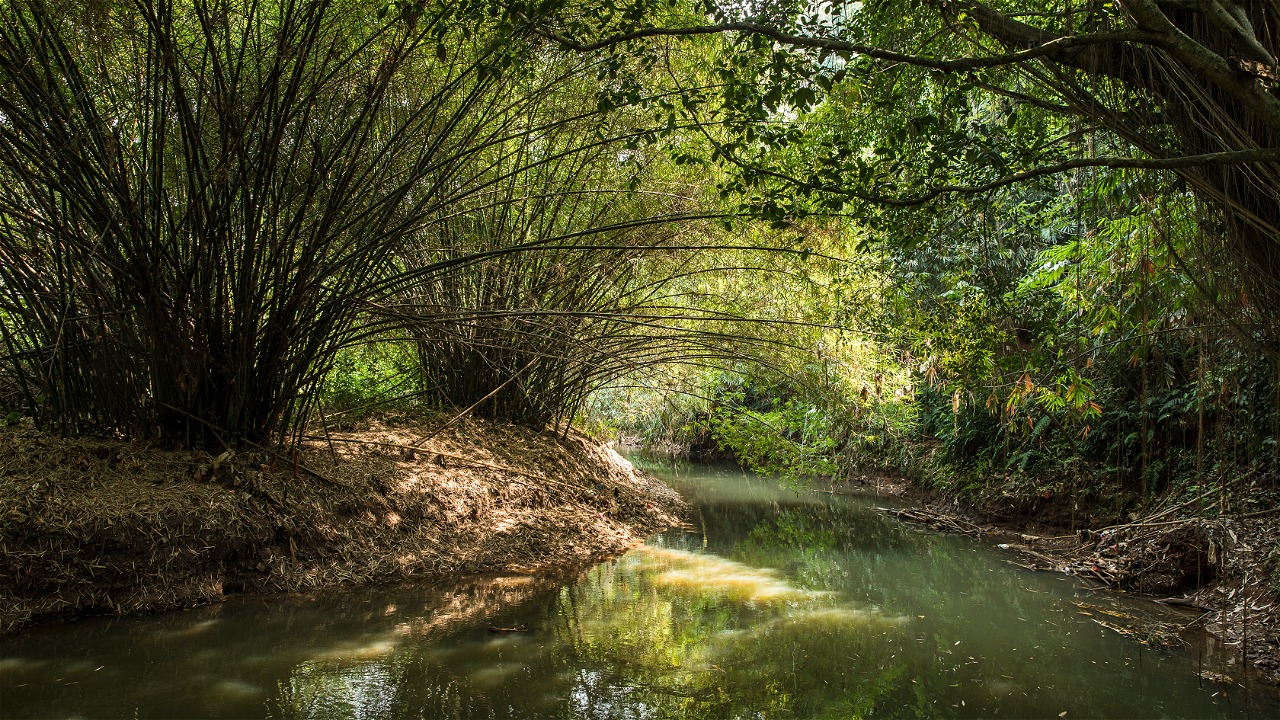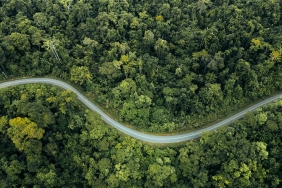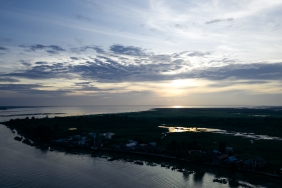DISKO JAKARTA BIO MARKING: GETTING TO KNOW JAKARTA'S BIODIVERSITY
By: Sani Firmansyah (Supporter Center Officer WWF-Indonesia)
The Conservation Discussion (DisKo) held on (28/10) raised the theme "Jakarta Bio Marking". The discussion, which took place at the Jakarta Creative Hub, discussed the biodiversity of Jakarta's native species that are threatened with extinction. Ady Kristianto, one of the speakers in this discussion still remembers the loud chirping of glasses birds in parks in Jakarta. But that disappeared about six years ago. "Now it is difficult, even almost never, to find these birds in city parks such as Monas, Suropati, Langsat, and others," said Ady. The disappearance of the birds is also a result of high capture rates. According to a bird hunter in 2013, up to 50 birds were caught per month. Thus, about 600 birds were lost from their habitat in Jakarta in a year.
One bird species that has declined in population is the bondol eagle. The animal, which is the mascot of DKI Jakarta, usually feeds in the bay and sea areas. With the poor quality of the waters, the availability of food for these birds has dwindled. Currently, Ady estimates that there are only 157 bird species left from a total of 256 species that originally existed in Jakarta. "The ones that are disappearing are langurs and mangrove cats," he added about the mammals that are now hard to find.
Meanwhile, the biodiversity that can still be found in parks and urban forests in Jakarta is 10 types of amphibians and more than 50 types of butterflies. In the Ciliwung River itself, there are still many otters that live in holes in the soil along the riverbanks. But ironically, about 92% of the fish in the Ciliwung River have been depleted. Other fauna that can still be found are 46 types of dragonflies, around 30 types of reptiles such as snakes, lizards, lizards, and monitor lizards. Animals that live around residents are mosquitoes, ants which number around 30 species and types of rats and bees.
Urban planning observer Nirwono Joga said the city government's policy has been ignoring flora and fauna and is more concerned with business alone, so it is not strange if it is increasingly difficult to find biodiversity in Jakarta. "The understanding is that cities are people and vehicles, the development carried out concentrates on those two. There is no city development policy that leads to preserving nature and flora and fauna to develop," said the man who is familiarly called Joga.
Infrastructure development in Jakarta itself is said by Joga to have cut down around 3,000 trees for various purposes, such as the construction of the integrated highway mode (MRT) and light rail transit (LRT). "In the Kuningan to Sudirman area, 2,500 trees were cut down. Thamrin was about 500 trees and in less than a year more than 3,000 trees were systematically cut down by the local government in the name of development," he said. According to him, the commitment of the city government to develop green open space (RTH) is still very minimal. This is reinforced by data that Jakarta is in the 57th position of healthy cities out of 60 major cities in the world. "The number one healthy city (is) in Tokyo, second is Singapore. Why can it be a healthy city because we talk about green open space. In Singapore alone (there is) 39% green open space," he said. For Jakarta, green open spaces can still be found in the Menteng and Kebayoran Baru areas. That's why the air quality in Central Jakarta and South Jakarta is better than in various other areas.
In the discussion, Primayunta, Supporter Engagement Coordinator WWF-Indonesia also explained why we must maintain the existence of species in an ecosystem. "Each species plays an important role in the ecosystem, namely as pollination intermediaries, seed dispersers and as top predators. If one of them is lost, the balance of nature in Jakarta will be disrupted," said Primayunta. Therefore, WWF-Indonesia has done various ways to continue to maintain biodiversity, including those remaining in Jakarta, including by educating the public to behave friendly to the environment by adopting a green lifestyle. "In addition, we never stop inviting people to join environmental volunteers, both those initiated by WWF and other communities so that they can directly contribute and experience how to preserve the environment," Prima concluded.





